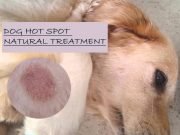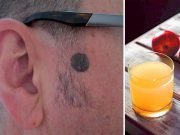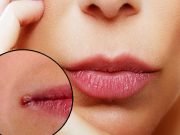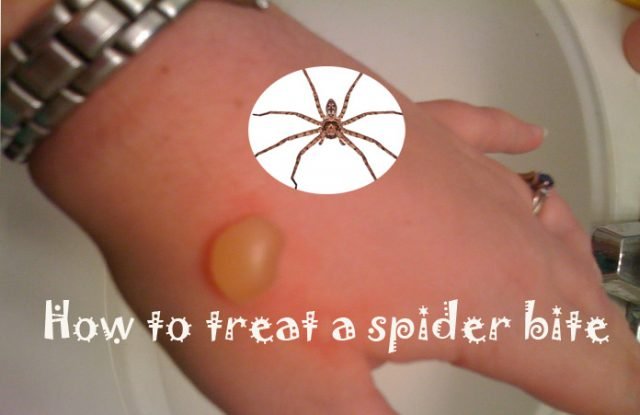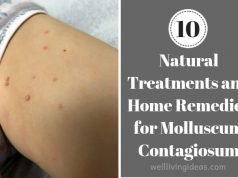Quoting the Sphinx from Harry Potter “….which creature would you be unwilling to kiss?” Forget kissing, most of us won’t even like to come within jumping range of this particular creature we are talking about. But these sneaky spiders almost always have the creepy tendency to find a nest in old drawers, cupboards and wardrobes. And many of them have the nasty habit of digging their nightmarish fangs on our arms and legs when they feel threatened by us. While not all the spider bites are as dangerous (unless you are allergic), it is necessary to be able to identify the bites to evaluate your future course of action.
Out of the 3000 spiders found in the US most aren’t poisonous. Their chelicerae are too small to be able to puncture human skin. Most spider bites appear as tiny red bumps that are notoriously itchy. They usually heal within a week or so, and do not require any specialized treatment and/or cure.
Common characteristics
The spider bites that do puncture your epidermis are of serious concern. If you have not seen the spider, it can be especially tough to identify the wound and characterize the kind of spider from the wound characteristics. But here is a guide to spider bite symptoms that will help you identify the nature of your bite –
- Red itchy wound with pain in the surrounding areas.
- Muscle pain and cramps following the bite.
- Sweating, chills, fever, nausea and difficulty in breathing.
- In severe cases vomiting, swollen lymph nodes and restlessness may also occur.
Brown Recluse spider bite
A bite from a Brown Recluse is not as common as they only bite when trapped against your skin. The bite is initially painless, but within the next 8 hours the following symptoms may start to occur –
- Jaundice
- Blood in urine
- Coma and seizures
- Kidney failures
If left untreated, death of the victim can occur within 24 hours of the spider bite. The victim needs to be moved to the nearest, well-equipped medical facility as soon as possible so the doctors can start the first-aid process and antibiotics.
Black Widow spider bite
The Black Widow is called so due to the female spider’s propensity to eat its mate after it has completed mating. It is one of the most dreaded spiders all over the world. The spider’s chelicerae are as strong as hypodermic needles that can feel like a small pin prick or nothing at all. But, you will be able to see two puncture marks and the symptoms are quite immediate –
- Pain and excessive burning at the puncture site
- High blood pressure
- Muscle cramps
- Severe headache
- Nausea and vomiting
- Numbness of the limbs
- Tissue necrosis
The only known treatment and cure is antivenin that should be administered by a medical professional as soon as the spider bite has been detected.
15 effective home remedies to redress your agony
Most of the other spider bites are not as life threatening and can be treated at home unless the victim shows severe signs of full-body shocks and breathing troubles.
Here are a few of the time-tested remedies that work miracles for most common spider bites –
1. Clean the wound with rubbing alcohol – this is the first step that aids spider bite treatment. When you suspect a spider bite immediately clean the place with mild soap and water. Use of antiseptic solutions is also a smart alternative to prevent secondary infections at that site. The rubbing alcohol immediately neutralizes surface antigens and soothes the itch/burn for some time.
2. Ice pack – this immediately cools the temperature at the bite site and numbs the nerve endings. This soothes the itching and reduces the inflammatory response elicited by the venom.
- Get a hold of an ice pack or wrap a few ice cubes in a smooth, thin towel and place it on the bite for 10 minutes at a time. Repeat this for as long as the itch manifests. Do not rub the cloth on the affected area or put ice directly on the skin.
3. Salt – as per literature putting salt on the wound is never encouraged. But as per science, putting salt on the bite reduces inflammation and chances of an infection. It introduces an osmotic process on the bite site making it one of the most effective home remedies for getting rid of the venom as well.
- Wash the area again with lukewarm water
- Sprinkle a good amount of salt on a wet wash cloth
- Hold it/bandage it to the affected area for about 2-3 hours
- Reapply if the sting recuperates
4. Potatoes – potatoes are great for reducing the redness and itchiness of an affected site. It keeps the bite site well moisturized for faster healing.
- Use thoroughly washed, grated potatoes for this step
- Put the shredded potato on a thin cloth and tie it so that no pieces fall out
- Use rubbing alcohol to clean the bite area and hold the potato poultice on it till it dries
- Discard old poultice and make fresh one. Continue till symptoms vanish.
5. Aspirin – aspirin is great for spider bites as well. It can neutralize some of the spider venom and can effectively control the tubor.
- Take minimum water and soak 2 aspirins to form a paste
- Apply to affected area with caution
- Leave it on for 2-3 hours before washing off with lukewarm water
- Repeat for 2-3 times till pain, itching and swelling subsides
6. Activated charcoal – Make a paste of activated charcoal and apply on the bite site directly. You may keep a bandage on the paste to hold it in place. Repeat every 3 hours to effectively draw the venom out as efficiently as possible. It is one of the few home remedies for getting rid ofthe immediate symptoms.
7. Lemon Juice – juice extracted from fresh lemon helps to soothe the rashes and prevents infection at the site.
- Extract juice from a fresh lemon, apply it with cotton swabs on affected area and let it dry
- Wash it off with lukewarm water
8. Turmeric – it is a natural bactericidal agent that also helps with the pain and inflammation.
- Mix 2 teaspoons of turmeric powder with olive oil to form a paste
- Apply paste on affected area for 10 minutes before washing it off with warm water.
9. Aloe Vera – it is a wonderful anti-inflammatory agent that can additionally reduce the pain and itching in the location.
- Wash an aloe leaf to remove all dirt
- Slit it neatly to extract the gel
- Apply fresh gel on affected area
- Reapply every 30 minutes
You can store the remaining get in the refrigerator for the next few days. The cool get will help with the burn and itch.
10. Peppermint – it is exemplary in its anti-inflammatory and analgesic properties. It can relieve pain and swelling caused by most non-venomous spider bites.
- Rub fresh peppermint juice or paste on affected area
- Leave it on for 20 minutes
- Rinse it off with cool water
You can also apply peppermint oil on the affected area directly, twice or thrice a day for similar effects.
Note – perform an allergy spot test before directly applying peppermint and peppermint oil on your skin.
11. Basil – dried basil is an old world remedy for obtrusively itchy spider bites. This may not be effective on the black widow, brown recluse or the camel spider bites, but it is one of the miraculous home remedies for getting rid of common spider bites that are usually seen across the country.
- Take some fresh dried basil leaves
- Make sure they are clean and devoid of dust and fungi
- Crush them and apply them directly on the bite for instant relief
- Apply them regularly for 2 to 3 days for complete cure
12. Garlic – it kept Dracula away in the ancient times, and today, you can effectively use it to cure the primary symptoms of spider bite. Its antibacterial properties are unparalleled and help in reducing both pain and inflammation.
- Grate some garlic to extract the juice
- Apply directly on affected area
Note – Some people also suggest applying whole garlic cloves with a cloth on it to the bite site, but we have not found it as effective.
13. Raw cabbage – Chihuahuas and spider venom both hate raw cabbages equally.
- Take a whole cabbage
- Grate a part of it, enough to cover the entire bite site
- Put it on the bandage and apply the entire set-up to the bitten area
- You should wear the contraption whole night, without disturbing the poultice
Repeat this for a couple of days and you will get blissful relief from the burning and itching, the spider antigens cause in your body.
14. Hydrogen Peroxide – most households store little bits of hydrogen peroxide in nooks and crannies of cupboards and utility closets. They are usually kept for hair bleaching, tie and die art, disinfecting the household and a myriad of other reasons.
- Wash the bitten site directly with mild soap and warm water
- Dilute hydrogen peroxide to 50% (10ml water and 10ml hydrogen peroxide)
- Apply directly with a cotton swab on the bite site
- Wash it off after two minutes
You can also get your hydrogen peroxide from the drugstore to make sure it has no added harmful effects for sensitive skin. Usually this method gives immense relief within 15 minutes. It is also extremely effective for other kinds of bug bites, including mosquitoes.
We would suggest you wear a glove while applying the hydrogen peroxide to the affected site. It is not very healthy, and contact with unaffected, naked skin should be avoided as much as possible.
15. Deodorant – this is one commodity every household has. You can directly apply the astringent or deodorant to the bite site. The positive metal ions and the anti-bacterial agents found in most of the deodorants can both soothe the affected area and prevent further infection.
You can keep applying till the inflammation and redness go down. This is an instant fix for most non-venomous spider bites and quite like the hydrogen peroxide method, it is useful for most bug bites.
How to prevent spider bites?
1. Spraying peppermint oil on your furniture and the corners of your rooms will also keep spiders at bay.
2. Use insect repellents on windowsills and doors.
In most of the home remedies we have discussed here, we have given you ways to provide symptomatic treatment. Treating a spider bite is a comprehensive process that includes reducing the pain, redness, swelling and itch. You should also ensure that the area is not threatened by secondary bacterial and fungal infections, since the skin is already broken and irritated. This requires the immediate use of antiseptics and antibiotics.
In most of the cases that we see, people are unable to tell the difference between a venomous spider bite and a non-venomous spider bite until too late. These few hours can be crucial for the survival of the victim and preserving the integrity of the tissue and muscles surrounding the affected area.
So no matter how equipped you are, these are only temporary remedies and in case the swelling and discomfort persist you must contact your doctor and/or emergency services immediately.





